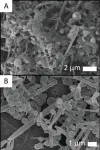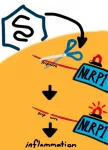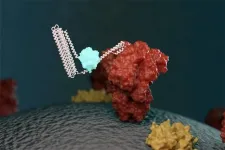Vaccines are cost-effective health interventions that substantially reduce death and illness from a range of diseases. International programmes have increased the coverage of routine childhood vaccines in LMICs and descriptions of impact are needed to inform future investment. Direct measurement of impact is difficult due to limitations in data and disease surveillance systems. Mathematical models can provide valuable estimates of impact based on data on disease burden and vaccine coverage.
The new study involved 16 independent research groups modelling the impact of childhood vaccination programmes in 98 LMICs. The study assessed impact of vaccination programmes against ten pathogens: hepatitis B (HepB), Haemophilus influenzae type b (Hib), human papillomavirus (HPV), Japanese encephalitis (JE), measles, Neisseria meningitidis serogroup A (MenA), Streptococcus pneumoniae, rotavirus, rubella virus and yellow fever virus (YF).
Dr Caroline Trotter from the University of Cambridge UK, and a co-author on the study, said: "There has been a much-needed investment in childhood vaccination programmes in low-income and middle-income countries (LMICs) and this has led to an increase in the number of children vaccinated. To inform future investment and ensure it continues we need to evaluate the impact of these programmes on public health. Our modelling has provided robust evidence on the effectiveness of vaccination programmes in LMICs and indicated what might be lost if current vaccination programmes are not sustained." [1]
Multiple models were applied for each pathogen (20 models in all) [2). Estimates of impact were based on past and future coverage of individual vaccines, vaccine effectiveness and data on deaths caused by the diseases, and on the years of healthy life lost due to premature death and disability from the diseases (DALYs) [3]. By comparing a scenario with no vaccination programmes in place to scenarios when vaccinations programmes had been implemented, the study estimated the impact on deaths and on DALYs.
The study used two methods to assess impact to provide both a cross-sectional (yearly) and longer-term (lifetime) view of impact. The first method assessed the difference in the number of deaths between the vaccination and no vaccination scenarios for each year and then totalled these annual results.
The second method assessed the long-term impact of vaccination by summarising impact over the lifetime for groups of people who were born in the same year between 2000 and 2030 and then calculated the difference between vaccination and no vaccination scenarios. This approach allowed for the inclusion of vaccination impact later in life, which is particularly relevant for diseases such as hepatitis B or HPV where there is a long delay between infection and severe outcomes. Most of the impact of hepatitis B vaccination will be seen after 2030 whilst for HPV impact will be seen after 2040.
Results demonstrated that between 2000 and 2019 there was an increase in the average number of vaccines received per child, both for existing vaccines such as measles, and for new vaccines such as rotavirus.
Considering impact per year, the study estimates that from 2000 to 2030, vaccination will have prevented 69 million deaths from the 10 diseases, 37 million of which were averted between 2000 and 2019. Vaccinations against measles had the biggest impact, preventing 56 million deaths between 2000 and 2030.
In terms of the impact of vaccination over the lifetime of people born between 2000 and 2030, the study estimated that vaccination will prevent 120 million deaths, of which 65 million are in children younger than five years. 58 million of deaths would be prevented by measles vaccines and 38 million by hepatitis B vaccines.
Considering those born in 2019 the study estimated that increases in vaccine coverage and introductions of additional vaccines resulted in a 72% reduction in lifetime mortality caused by the 10 pathogens. By taking this 2019 birth cohort and using UN World Population Prospects demographic estimates [4], the study estimated that mortality in children under five in the 98 countries would be 45% higher in the absence of vaccination against the 10 pathogens.
The study also examined the relative impact of each vaccine and demonstrated that measles, Hib and pneumococcal conjugate vaccines (PCVs) have the largest impact on deaths of children under five. Vaccines against HPV, hepatitis B and yellow fever have the largest impact per person vaccinated over lifetime.
Corresponding author, Professor Neil Ferguson from Imperial College London, UK said: "Our study signifies the huge public health benefits that can be achieved from vaccination programmes in low-income and middle-income countries. By projecting up until 2030 in these 98 countries we have provided insight on where investments in vaccine coverage should be directed to achieve further gains, for example increasing HPV coverage in girls and pneumococcal conjugate vaccines (PCV) coverage in children under five will have the most impact according to our modelling." [1]
Co-author Dr Katy Gaythorpe, also from Imperial College London, UK added: "By estimating how much higher mortality levels would be if there were no vaccination programmes in place, our study has highlighted how crucial it is to maintain high coverage levels. This will require continuing political commitment, funding, public engagement to promote the benefits and safety of vaccinations, and programmes to deliver education, training and supervision on immunisation." [1]
Researchers reported the level of uncertainty from data on disease burden and from the structural assumptions of the different models but they were unable to evaluate uncertainty in demographic estimates and estimates of past and future vaccine coverage. The study flagged a number of limitations, for example for those countries where certain vaccines were yet to be introduced the study assumed they will reach the same coverage as a reference vaccine, which may lead to an overestimation of impact. In addition, no models accounted for variation in vaccine coverage according to geographic region or clustering of hard-to-reach groups. Researchers highlighted the need for future models to stratify impact for different populations within countries to achieve more detailed estimates.
INFORMATION:
NOTES TO EDITORS
This study was funded by the Vaccine Alliance (Gavi) and The Bill and Melinda Gates Foundation and It was conducted by researchers from Imperial College London, London School of Hygiene & Tropical Medicine, National University of Singapore, Public Health England, Laval University, Johns Hopkins University, Colorado State University, The Pennsylvania State University, Lafayette College, Kaiser Permanente, University of Cambridge, University of Notre Dame, Dublin City University, Harvard University, Oxford University, University of Southampton, Conservatoire national des arts et metiers, University of Hong Kong and the Center for Disease Analysis Foundation.
The labels have been added to this press release as part of a project run by the Academy of Medical Sciences seeking to improve the communication of evidence. For more information, please see: http://www.sciencemediacentre.org/wp-content/uploads/2018/01/AMS-press-release-labelling-system-GUIDANCE.pdf if you have any questions or feedback, please contact The Lancet press office pressoffice@lancet.com
[1] Quote direct from authors and cannot be found in the text of the Article.
[2] Twenty mathematical models were used to produce the estimates: two models for each pathogen other than Hep B, which had three models, and yellow fever, which had one model. Descriptions of the models are provided in the Supplementary Information. Impact estimates of vaccines were derived from averaging over the different models, with each model for a pathogen given equal weighting.
[3] The main text of the study focusses on presenting vaccine impacts on mortality; more detailed estimates of mortality impacts and estimates of DALYs averted by vaccination are given in the Supplementary Information
[4] The 2017 revision of UN World Population Prospects:
https://population.un.org/wpp/Download/Archive/Standard






